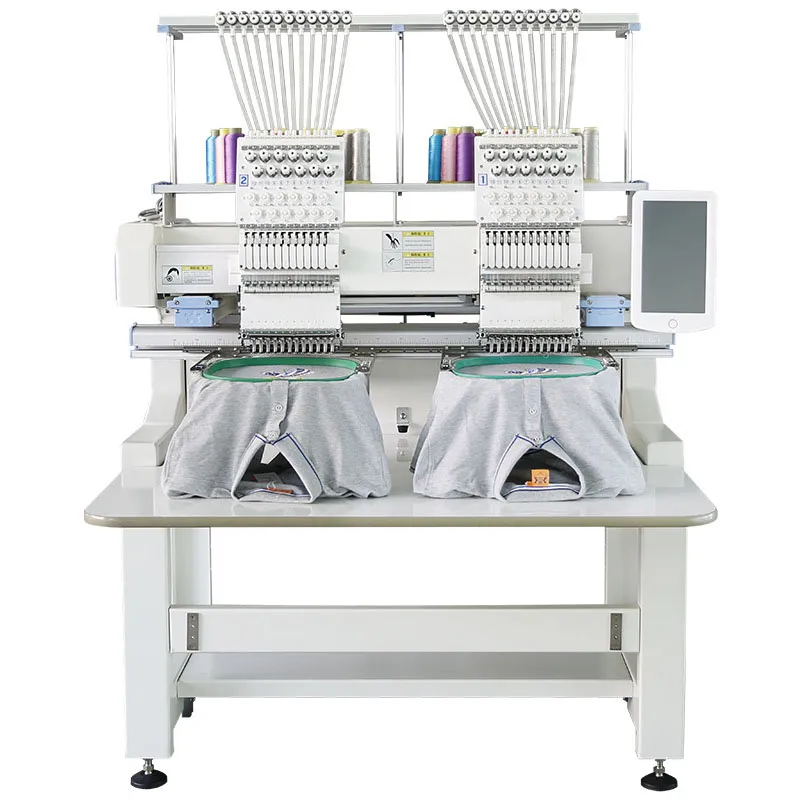Jul . 28, 2024 17:34 Back to list
Exploring the Latest Technologies in Computerized Embroidery Machine Manufacturing and Their Impact on Production Efficiency
The Rise of Computerized Embroidery Machines in Factories
In recent years, the embroidery industry has experienced a significant transformation due to technological advancements. The introduction of computerized embroidery machines has revolutionized the way embroidery is produced, making it more efficient, accurate, and adaptable. This article delves into the impact of computerized embroidery machine factories, highlighting their benefits, features, and future prospects.
Computerized embroidery machines utilize advanced software and hardware to automate the embroidery process. Traditional embroidery methods often relied heavily on manual labor, which could be time-consuming and prone to errors. In contrast, computerized machines enable manufacturers to create intricate designs quickly and consistently. This efficiency is particularly crucial for factories that handle large volumes of orders, allowing them to meet tight deadlines while maintaining high-quality standards.
One of the most significant advantages of computerized embroidery machines is their precision. These machines are equipped with advanced computer systems that allow for highly detailed and complex designs to be reproduced accurately. This precision is especially vital for industries such as fashion, promotional goods, and home textiles, where brand consistency and design integrity are paramount. Factories can now easily replicate designs across multiple products without worrying about variations that can occur with manual embroidery methods.
Moreover, computerized embroidery machines offer a wide range of design capabilities. With the incorporation of digitizing software, manufacturers can convert images into stitch files, enabling them to create unique designs tailored to their client’s needs. This flexibility allows factories to cater to the growing demand for custom embroidery, providing customers with the opportunity to express their individuality through personalized products.
embroidery computerized machine factories

The evolution of computerized embroidery machines has also led to increased productivity. Unlike manual labor, which is limited by the speed and endurance of human workers, computerized machines can operate continuously with minimal supervision. This not only reduces labor costs but also ensures that factories can maximize output. Many modern machines are designed to operate multiple heads, allowing several designs to be embroidered simultaneously. This capability enhances the overall efficiency of operations, significantly increasing the factory's production capacity.
Another crucial aspect of computerized embroidery machine factories is the ability to incorporate innovation and technology. Many machines are now equipped with features such as Wi-Fi connectivity, touchscreen interfaces, and integrated design libraries. These features enable operators to manage their workflows more effectively, troubleshoot issues in real-time, and access a plethora of design options at their fingertips. The connection to digital platforms also facilitates easier updates and access to new designs, keeping factories competitive in a rapidly changing market.
While the benefits of computerized embroidery machines are evident, the transition to this technology also poses challenges. Factories must invest in training their workforce to operate and maintain these machines effectively. Skilled labor is still essential to ensure that machines are used to their full potential and to troubleshoot any issues that may arise. Additionally, the initial investment in computerized embroidery technology can be substantial, requiring careful consideration of the return on investment.
Looking ahead, the future of computerized embroidery machine factories appears promising. As technology continues to evolve, we can expect further advancements that will enhance the capabilities of these machines. Innovations such as artificial intelligence and machine learning may allow for even greater levels of automation and precision, potentially transforming the industry further.
In conclusion, computerized embroidery machine factories are at the forefront of a revolution in the embroidery industry. With their ability to increase efficiency, precision, and customization, these machines are reshaping how embroidery is produced. As manufacturers continue to embrace this technology, the possibilities for creativity and innovation in the embroidery sector are virtually limitless. The journey has just begun, and we are likely to see even more exciting developments in the years to come.
-
Affordable Commercial Embroidery Machines for Sale
NewsAug.01,2025
-
Top AI Embroidery Machine Manufacturers | GPT-4 Turbo Tech
NewsJul.31,2025
-
Affordable Computer Embroidery Machines | Best Prices
NewsJul.31,2025
-
Cheap T Shirt Printing Embroidery Machine with Multi Needle Efficiency
NewsJul.30,2025
-
High-Quality T Shirt Embroidery Machine – Multi & 12/15 Needle Options
NewsJul.30,2025
-
High-Efficiency Computerized T Shirt Embroidery Machine for Custom Apparel
NewsJul.29,2025

Copyright © 2025 Xingtai Pufa Trading Co., Ltd All Rights Reserved. Sitemap | Privacy Policy
